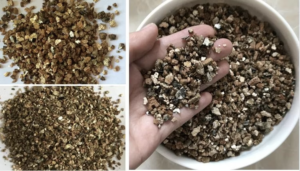The First Step to a Bountiful Harvest

Getting good germination is the first hurdle in the small greenhouse or home-grower’s path to a bountiful summer harvest. Buying expensive seeds, only to find they rot in water-logged, mouldy compost is perhaps the most discouraging experience a new gardener can face – it was for me anyway – and over the past few years, I’ve tried several different growing media and created my own home-made blends to try and find the best seed starting mix and maximise seed germination.
Why the Right Seed Starting Mix Matters
Using the correct seed starting mix is the easiest way to improve germination rates. By getting a good balance of water retention, drainage and aeration, you can reduce the chance that seeds rot and maximise the odds that your seeds will sprout, grow strong roots and become strong, healthy plants.
Go Beyond Store-Bought Mixes

By finding a potting mix or compost specifically designed for starting seeds, you can avoid problems with seeds or roots rotting or suffering due to extremely high nutritional content and also improve germination rates. But I find that we can do one better by blending in some extra ingredients.
In this article read what ingredients go into a perfect seed starting mix, what ratios to use so that you can make it at home, and expected results of a small experiment to demonstrate just how good germination rates are with this mix.
Choosing the Best Compost for Seeds

Seeds are small, fragile things and their roots and shoots are strongly affected by their environment. When sowing seeds at home, the growing media will have an enormous impact on the health and success of your plant.
The ideal growing material needs to:
- Have the right nutritional balance
- Retain enough water so the seedling doesn’t dry out
- Drain well so the roots don’t rot
- Be loose and permeable for air and root growth
- Be solid enough to support the plant
- Limit bacterial and fungal problems
- Allow microbial life to flourish
That’s a lot to ask from one material, and the optimal balance varies by plant. No wonder it’s hard to find the perfect compost!
Why Not All Compost Is Created Equal
Most compost suppliers will have their own mix marketed as ‘seed starting compost’. Using a general-purpose compost meant for mature plants can be harmful for seedlings due to excess nutrients and poor texture. Swapping to a seed-specific mix is an instant upgrade for germination and seedling health.
Look for compost that is:
- Designed to promote high germination rates
- Peat-free
- Well-draining
Improve Drainage & Aeration to Get Better Germination
To take your mix even further, blend in these two superstar ingredients:
Coconut Coir

When it comes to avoiding waterlogging, you can’t beat coconut coir. It’s fluffy, airy, and retains water without drowning the seed.
- Environmentally friendly and lightweight
- Transports as compressed bricks—just add water!
- Sterile, reducing mould and bacterial risks
- Inexpensive way to bulk out compost
Coconut coir doesn’t provide nutrients or soil biology, so seedlings will need transplanting soon after germination. But for starting seeds, it’s nearly perfect.
Perlite

Perlite is a volcanic glass that’s been heat-treated to form ultra-light, white pebbles.
- Improves drainage and aeration
- Prevents compaction
- Helps roots absorb oxygen
- Reduces risk of rot and damping-off
It’s long-lasting and effective but has a higher environmental cost due to mining and processing.
More Ways of Improving Germination Rates
Using the right mix is just one part of the puzzle.
You can also boost germination by:
- Maintaining ideal humidity and temperature
- Meeting specific light requirements for each seed
- Using newer seeds stored in cool, dry places
- Pre-soaking seeds before planting (priming)
- Following correct sowing techniques, including depth and orientation
Final Thoughts
To sum up, creating your own seed starting mix using high-quality compost, coconut coir, and perlite can dramatically improve germination success and plant health. Combine that with optimal growing conditions, and you’re well on your way to a thriving garden.
Author: Alex Smith

